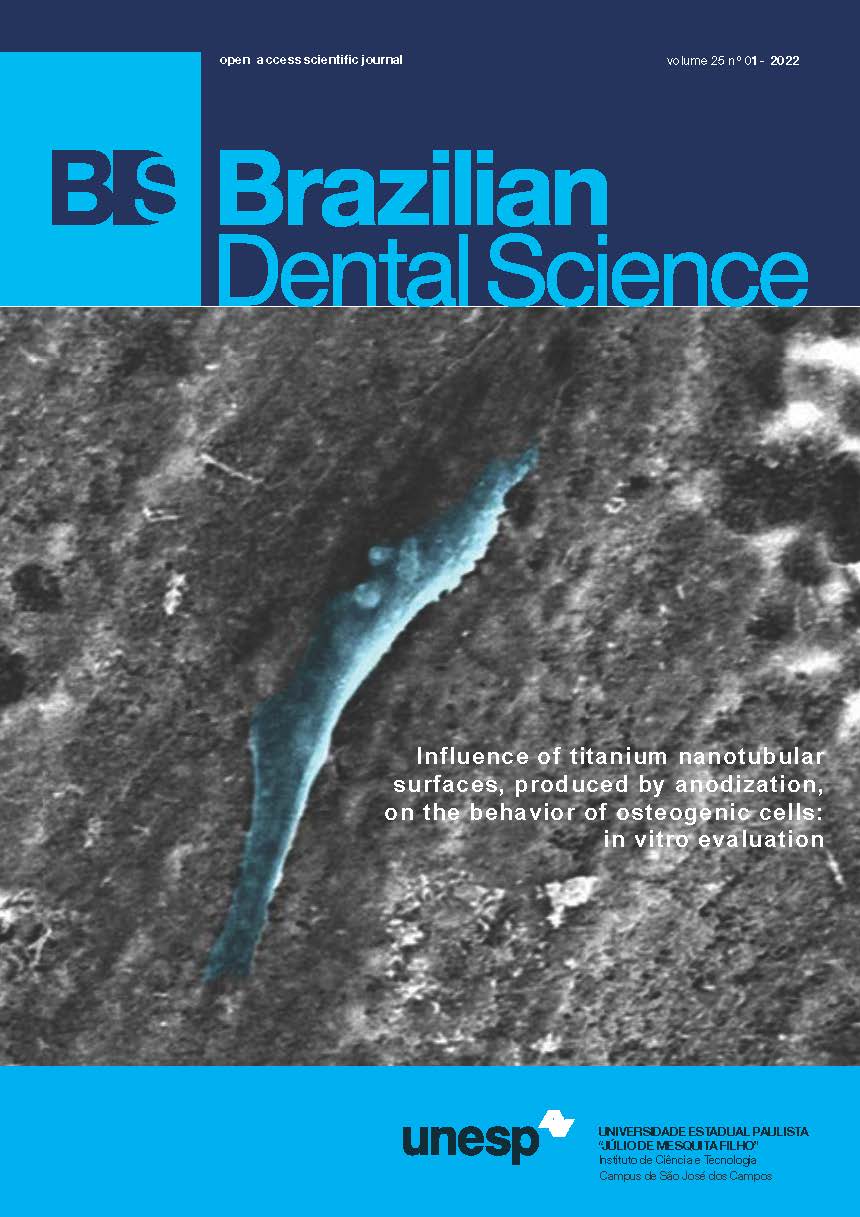The relationship between prevalence of dental anxiety and dental caries: cross-sectional study
DOI:
https://doi.org/10.4322/bds.2022.e2598Abstract
Objective: This cross-sectional study aimed to assess level of DA among dental students in different grades
and patients and to evaluate associations between DA and presence of dental caries. Material and Methods:
Both four hundred all-grade dental students of Istanbul University and patients of Istanbul University Hospital
were included in the study after random selection. Data regarding gender, oral hygiene habits, frequency of
dental visits, and educational level were obtained via questionnaire. DA of participants were measured using
both Modified Dental Anxiety Scale (MDAS) and Dental Fear Survey (DFS). The prevalence of caries was
determined using International Caries Detection and Assessment System Criteria (ICDAS). Data were analyzed
using Kruskal-Wallis, Mann-Whitney U and Chi square tests. Results: Female patients and female 4th-year
students had significantly higher MDAS scores (p<0.05). First-year students had significantly higher MDAS and
DFS scores than 4th and 5th-year students (p<0.05). Patients who had caries and brushed their teeth less than
twice a day had significantly higher MDAS scores (p<0.05). Among 3rd-year students, individuals who visited
dentist regularly had lower MDAS scores (p<0.05). Conclusion: DA among senior dental students was lower
than that in younger students with an increase in knowledge about dentistry. Tooth brushing frequency and
caries prevalence was associated with DA in patient group. No association was found between DA and frequency
of dental visits, except in 3rd-year students.
KEYWORDS
Dental anxiety; Dental caries; Dental student; Prevalence.
Downloads
Downloads
Published
Versions
- 2022-03-29 (4)
- 2022-03-07 (3)
- 2022-01-24 (2)
- 2022-01-24 (1)
How to Cite
Issue
Section
License
Brazilian Dental Science uses the Creative Commons (CC-BY 4.0) license, thus preserving the integrity of articles in an open access environment. The journal allows the author to retain publishing rights without restrictions.
=================




























